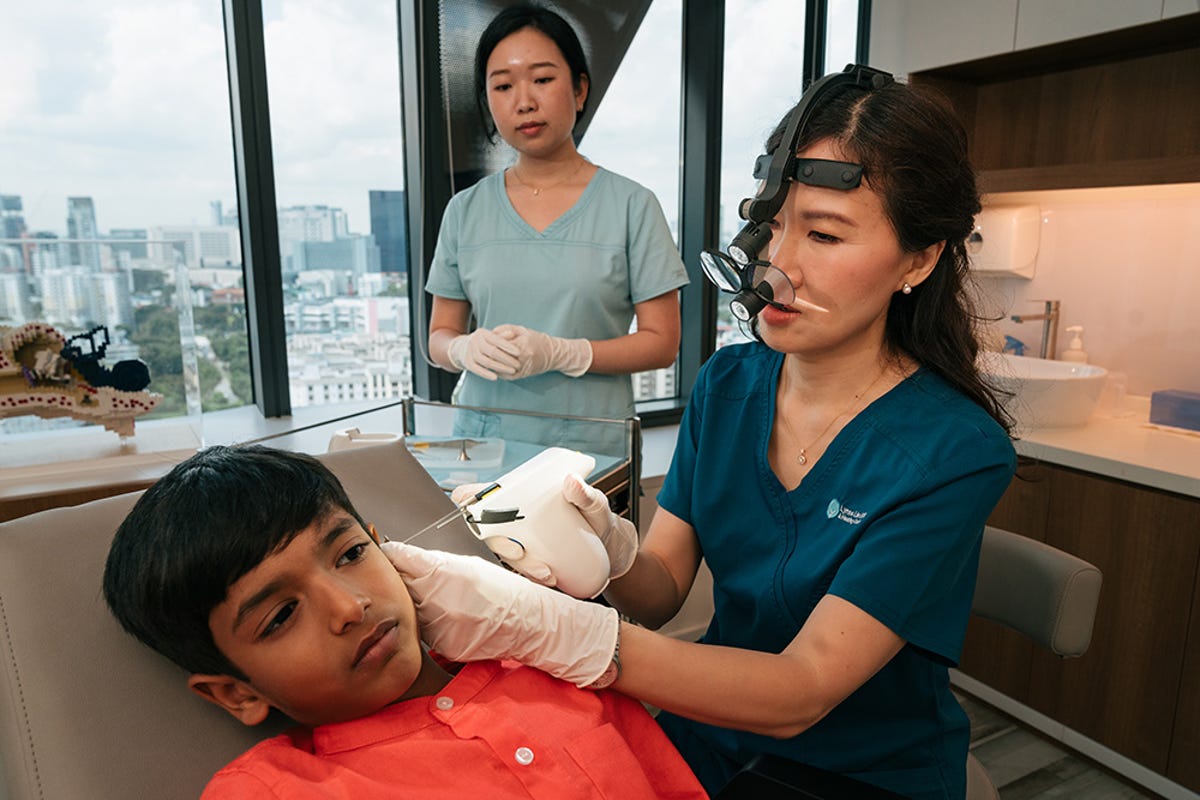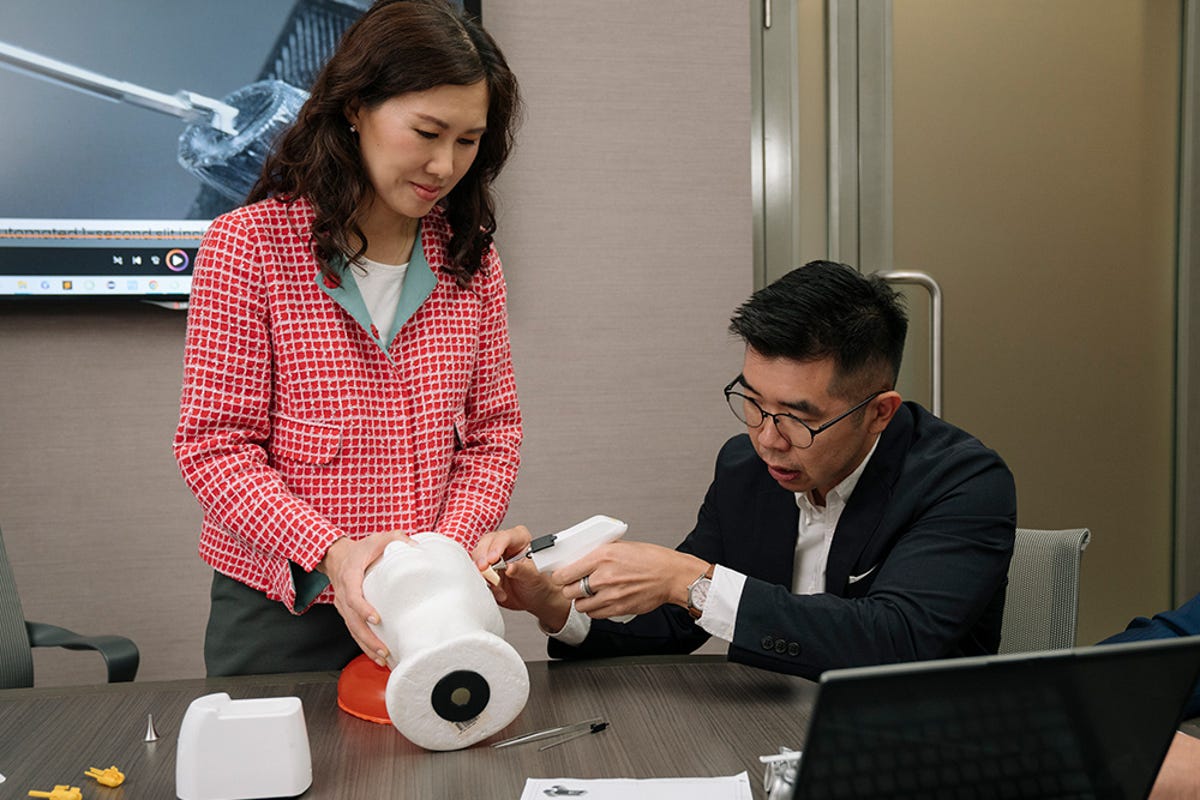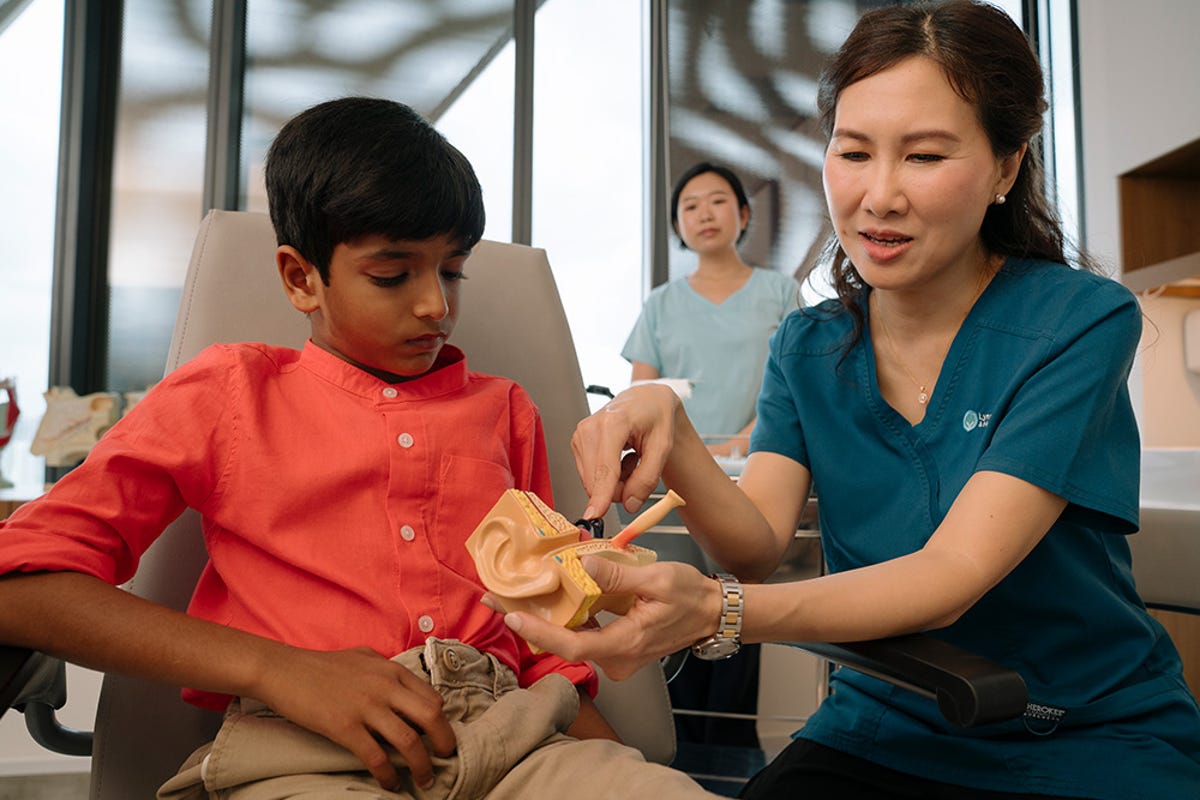Fellow Portrait
Lynne Lim
NousQ

NousQ created CLiKX, the world’s first handheld robotic device for ear tube surgery without microscopes or general anesthesia.
Science & Technology Pioneer Award
Singapore
Fellow
2024
Updated March 2024
Essential information about the world often is inaccessible to visually impaired people
Glue ear (otitis media with effusion), which occurs when fluid becomes trapped in the middle ear, is the top cause of childhood hearing loss. But annually, only 15 percent of the 120 million people worldwide who need ear tube surgery undergo it because specialists must perform it under general anesthesia in the operating theater—which many parents are reluctant to authorize—using a variety of instruments and an expensive surgical microscope.
“In developing nations, there often aren’t enough operating theaters, ENT surgeons, or anesthetists to perform glue ear surgery,” says NousQ founder and CEO Lynne Lim. “Patients sometimes have to wait for more than five years before they can get this procedure done.”
Even in developed countries like the United States, only 11 percent of children advised by their ENT doctors to go for glue ear surgery have the procedure because of the risk of general anesthesia, high cost, inconvenience, and waiting times that can stretch from months to years.
If not treated early enough, complications from frequent, severe glue ear infections include hearing loss, speech and learning delays, ruptured ear drums, and even brain infections.
It’s a privilege to be able to work on solving this problem not only for the patient but for the entire family, including caregivers. Sometimes kids are misdiagnosed with bad behavior, developmental delays, or ADHD when all they have is hearing loss.

Daughter’s ear piercing sparks the idea for a solution
While on a humanitarian medical mission in rural Cambodia, Lynne, an experienced pediatric ENT surgeon, was devastated when she had to turn away hundreds of children needing surgery for glue ear because she lacked access to general anesthesia, a surgical microscope, and an operating room. Back home, she saw her daughter get her ears pierced with the click of a handheld device, and the idea for CLiKX was born.
Ten years in development, NousQ’s CLiKX is the world’s first handheld robotic device that allows doctors to insert one-millimeter ear tubes in one second with only one click of a button, under local anesthesia in a clinic rather than an operating room. “Patients can be home in an hour,” Lynne says.
The advantage of CLiKX is that it mimics current surgery techniques by making a small slit in the ear drum, guided by robotic sensors, and inserts off-the-shelf, proven ear tubes.

After successful initial trials, NousQ moves down the path to regulatory approval
Initial human clinical trials of CLiKX in Singapore have shown the safety of the device. “We began testing on adults, which allowed us to ask them specifically about their experience,” Lynne says. “They said there was no pain, just a soft whirling sound, light pressure, then a click. Then they could hear immediately.”
In Q4 2024, NousQ will begin an FDA clinical trial in the United States. The company aims to receive FDA regulatory approval for CLiKX in 2025 and to launch in the United States, APAC region, and the European Union thereafter.
“My hope is that one day, for under-resourced places, CLiKX will allow even non-ENT surgeons to perform this procedure,” Lynne says. “Imagine going up a mountain with CLiKX in your backpack, and clicking an ear tube into the eardrum so a child hears again! Millions more can be helped.”
My hope is that one day audiologists, pediatricians, and general surgeons will be able to perform ear tube surgery as well as ENT doctors.





